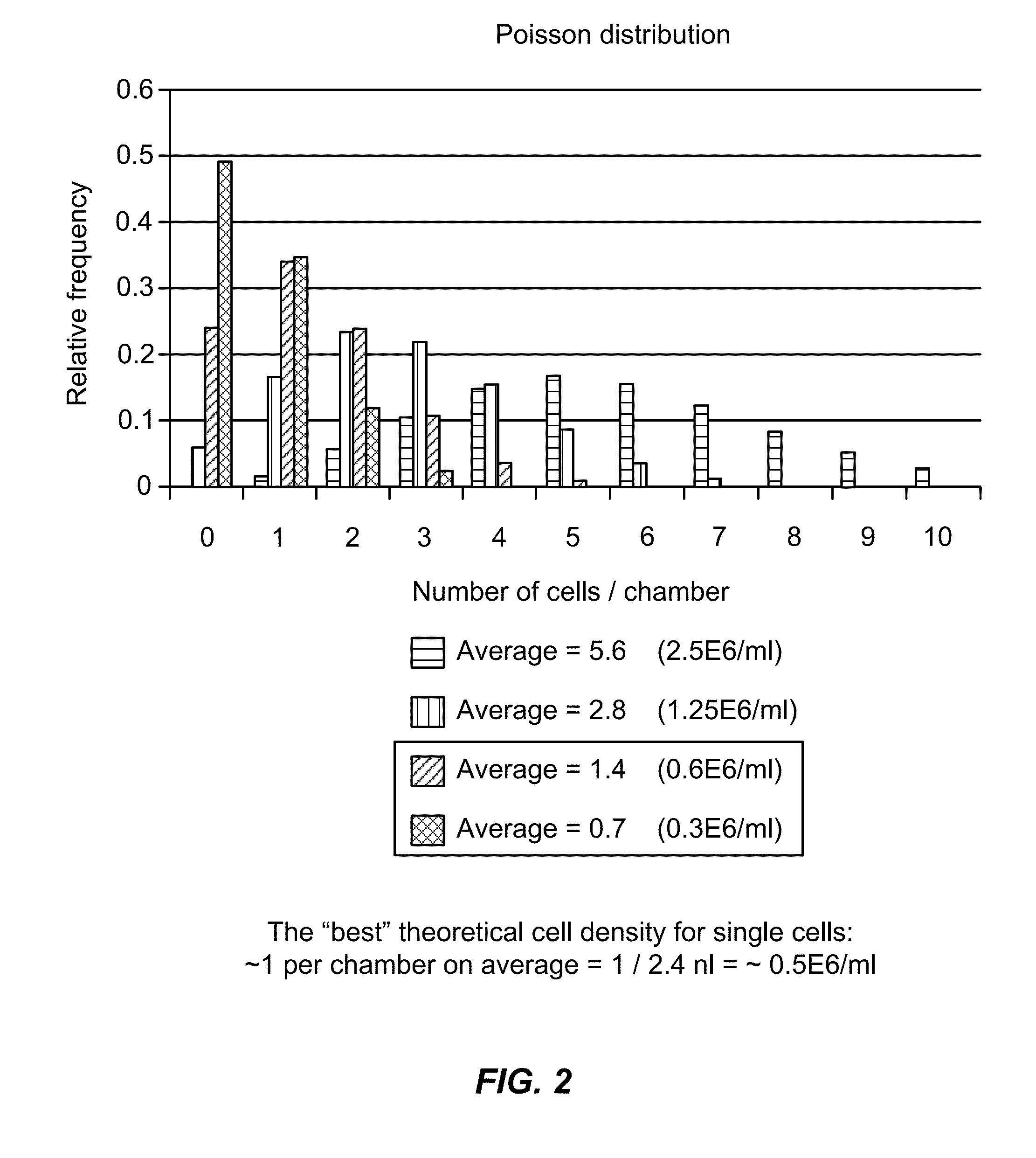Single-particle analysis of particle populations
a single-particle, particle technology, applied in the direction of ion-exchangers, biochemistry apparatus and processes, separation processes, etc., can solve the problem of hundreds of cells required to load the chip
- Summary
- Abstract
- Description
- Claims
- Application Information
AI Technical Summary
Benefits of technology
Problems solved by technology
Method used
Image
Examples
example 1
Method to Prepare Nucleic Acids for Sequencing from Single Cells using AccessArray™ IFC Adapted for Cell Handling (“MA006”)
Summary of General Approach
[0343]A “chip,” herein referred to as MA006, has been developed using the AccessArray™ platform as have methods using MA006 that integrate cell handling and sample preparation for nucleic acid sequencing. See FIG. 1 for a schematic diagram of the MA006 unit cell architecture, showing on-chip processes. This integration simplifies the steps required to execute the experiment. Moreover, only hundreds of cells are required to load the chip.
[0344]The MA006 chip has the following features:
[0345]Unit cell with 170×30 pm rounded channel to load mammalian cells
[0346]48.48 matrix format;
[0347]Use heat to lyse cells in cell channels;
[0348]Separate reaction chamber for amplification reaction;
[0349]170×170 pm containment valves to close cell channels;
[0350]Extra resist layer: PourOB-30 gm rounded resist;
[0351]Chip fabrication: Use current AA48.48 ...
example 2
Size-Based Microfluidic Single-Particle Capture
[0388]One approach to discretely capturing single cells from suspension as they flow through a microfluidic device is to define a microfluidic geometry that guides flow of a suspension of particles (such as cells or beads) over a capture site in a manner that the capture site catches a single particle, efficiently captures single particles (e.g., the probability of the capture of a particle passing near a capture site is high), and / or guides the remaining suspension around the capture site. The proposed geometries can be size-based, i.e., the capture site is just large enough to contain one particle (and no more), but still permit the flow of particle-free suspension through the site at reasonably low fluidic impedance, such that an empty capture site would guide the flow of particles toward it rather than around it. This goal can be accomplished by the use of a drain. Additional proposed geometries can also focus the flow of particles ...
example 3
Surface Marker-Based Capture of Particles
[0389]Single-cell studies within microfluidic architectures require the isolation of individual cells into individual reaction partitions (chambers, droplets, particles). Limiting dilution is one method for achieving this isolation. Cells are loaded at concentrations of less than one cell per partition on average, and distribute into those partitions in a pattern described by Poisson statistics. Another approach is to rely on mechanical traps to capture cells. These traps are designed to capture cells of a given size range (see Example 2). This results in a biased selection of cells from the population within that size range.
[0390]For some applications, an ideal capture method would use biological markers expressed on the surface of cells. Antibodies can be patterned in specific locations on a microfluidic array, although this approach may not be simple, depending on the structure of the microfluidic array.
[0391]This example describes a metho...
PUM
| Property | Measurement | Unit |
|---|---|---|
| Tm | aaaaa | aaaaa |
| temperature | aaaaa | aaaaa |
| temperature | aaaaa | aaaaa |
Abstract
Description
Claims
Application Information
 Login to View More
Login to View More - R&D
- Intellectual Property
- Life Sciences
- Materials
- Tech Scout
- Unparalleled Data Quality
- Higher Quality Content
- 60% Fewer Hallucinations
Browse by: Latest US Patents, China's latest patents, Technical Efficacy Thesaurus, Application Domain, Technology Topic, Popular Technical Reports.
© 2025 PatSnap. All rights reserved.Legal|Privacy policy|Modern Slavery Act Transparency Statement|Sitemap|About US| Contact US: help@patsnap.com



